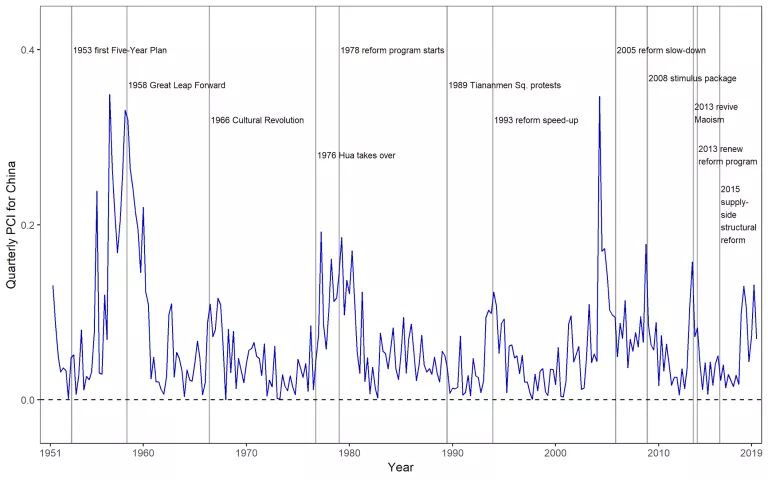- | International Freedom and Trade International Freedom and Trade
- | Expert Commentary Expert Commentary
- |
How China’s State-Run Media Foretold the Trade War Stand-off
After a year of drama, the US-China trade war is back to square one. Tariffs still hurt companies and consumers in both economies. Huawei, the alleged US national security threat, was reprieved, much like its peer ZTE. And efforts to reduce the US trade deficit with China, President Trump’s biggest grudge on trade, made a prominent return to the center of the bargaining table.
The hawks who were expecting the pressure campaign to change Chinese behavior might be disappointed by the stand-off. But to those who have followed the Policy Change Index (PCI), our machine learning program that predicts China’s policy directions by “reading” its news propaganda, this should be no surprise. As we have predicted, time and again, China has long been drifting away from the structural changes the US demands.
The prediction was not based on our subjective assessment; it was deduced from the nature of China’s model of governance—a paradigm created by Vladimir Lenin a century ago. And there’s a lot more this paradigm can tell us in the future.
The chart below shows the recently-updated PCI for China, up to the second quarter of the year. The spikes indicate upcoming policy changes, and the labels show the major historical changes.
Figure: PCI for China, 1951 Q1 to 2019 Q2

The PCI is able to predict Chinese policy because of the way that Leninist regimes are governed. In short, the authority of the Communist Party rests on its self-proclaimed superior ability to “guide” the masses in the “right direction.” And news propaganda is the predominant channel through which such “guidance” is delivered. Therefore, by deciphering changes in the state media, the machine learning program is effectively predicting policy changes to come.
Since Lenin’s time, the Party has never been shy to assert its superiority over the people. As Lenin said in the early days of the Soviet Union, “the whole task of the Communists is to be able to convince the backward elements.” Just so we are on the same page, the “backward elements” means you and me—the regular folks—who are presumably incapable of pursuing their own happiness if left to their own devices.
Such “guidance” really makes a difference, according to Josef Stalin, because the Party can then “convince the masses by their own experience that its policy is sound, thus ensuring the support of the working class and inducing the broad masses of the workers to follow its lead.”
One cannot overemphasize the importance of state-run media in delivering the Party’s “guidance.” To Lenin, for example, it is a fundamental necessity “to transform the press from an organ which primarily reports the political news of the day into a serious organ for the economic education of the mass of the population.” For this reason, Lenin despised and rejected the notion of objectivity in news reporting. Instead, news organizations were put under direct control of the Soviet Communist Party’s proudly named Department of Propaganda and Agitation.
The persistence of the century-old Soviet model is impressive. China, the world’s second-largest economy, is known to have closely followed this paradigm for decades. Mao Zedong, to whom many have compared President Xi, asserted in the early years of the People’s Republic that “newspapers must be run by politicians.” They were, and they still are.
At the beginning of China’s economic reforms in the late 1970s, many hoped—somewhat naively—that China would soon become an open society as its economy opened up. That ship won’t sail by the Communist playbook.
It’s easy to dismiss such a system entirely just because we hold very different values. Yet understanding how the Chinese system works can provide valuable information on its behavior and future directions. For this reason, we maintain a monthly newsletter on the PCI project so our readers will be informed of what the “Big Brother” is up to next. (Those interested can sign up here).
President Trump’s trade war against China is undoubtedly risky; it tries to change the Chinese government’s behavior by hurting both economies. While it’s too soon to tell how it will end, one thing is certain: reading the Chinese tea leaves is indispensable for President Trump’s brinkmanship.
Photo credit: MARK SCHIEFELBEIN/Stringer/Getty Images